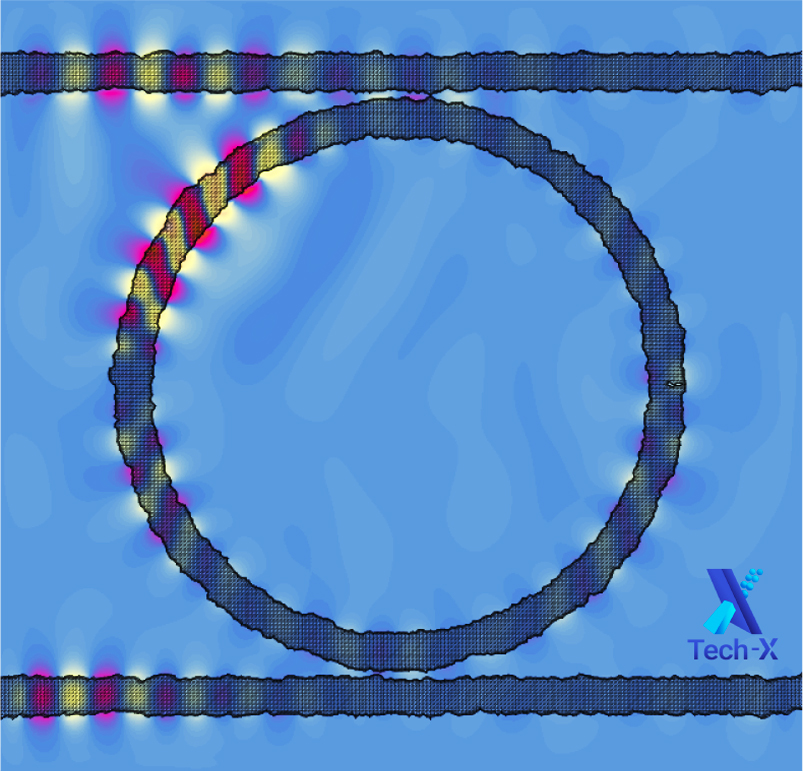
Similar to analog circuits, which use EM waves at communications frequencies, components in photonics integrated circuits (PICs), which use EM waves at optical frequencies, are sensitive to layout and manufacturing variations—arguably more so. Similar to their semiconductor counterparts, which transmit information using electrons, PICs transmit information using photons, and they also have to resolve signal integrity and parasitic losses. Designers of PIC components, therefore, have had to pioneer new design workflows. These workflows typically rely on FDTD EM engines that are computationally demanding, even for smaller components.
Currently, component designers have limited awareness of physical effects since they are limited to simulating extruded (as-drawn) GDS geometries, which under-represent important details of the as-manufactured PIC. As a result, they learn of the impact of physical effects like backscattering and parasitic interaction with other components much later, after prototype fabrication and during testing. This results in excessive design-of-experiments iterations and long loops of prototyping shuttle runs with their foundry partner, resulting in unpredictable timelines to market and a lack of flexibility to react to evolving requirements.
The solution to the problem requires industry cooperation and improvements in both computational hardware and software features and algorithms. For computational hardware, Nvidia’s GPU and CUDATM programming language provide powerful new capabilities for solving large, difficult problems. On the simulation side, Tech-X has been doing very large physical simulations for national labs and large commercial customers on supercomputers for over two decades. But we also have recognized that most photonics IC design groups don’t have access to these resources, and modeling large manufacturing-realistic photonic component designs requires distributed computing across 100’s of CPU cores or 10s of CUDA GPUs, now accessible at larger companies or through Amazon Web Services. In addition, we have been working with customers to understand the problems they face in achieving more accurate simulations and have built those capabilities into XSim, designed specifically to tackle computationally challenging manufacturing-aware photonic component design.
To highlight XSim capabilities:
- STL or STEP input files or extruded GDS with optional roughness modeling to accurately describe 3D manufacturing features and sidewall roughness. The built-in Composer™ tool can also create 3D geometry.
- User-defined or built-in materials properties, constant or variable-grid meshing, highly accurate dielectric algorithms, mode solver/launcher, accurate S parameter calculations.
- Efficient distributed computing across a large number of CPU cored or GPUs to resolve the critical dimension required for the simulation volume.
- Efficient cloud hardware configuration set-up and access to AWS’s wide range of x86 and GPU cluster instances for those design groups who do not have access to on-premises workstations or clusters.
Come see how XSim can reduce prototyping cycles at our webinar on September 5th. More information and webinar sign-up can be found at www.txcorp.com/xsimwebinar.
John Cary
Founder, CTO
Tech-X Corporation
Also Read:
CTO Interview: John R. Cary of Tech-X Corporation
Understanding Sheath Behavior Key to Plasma Etch
Share this post via:





Quantum Computing Technologies and Challenges